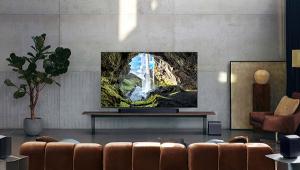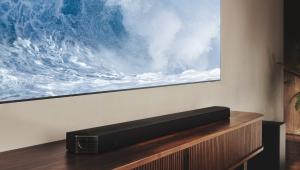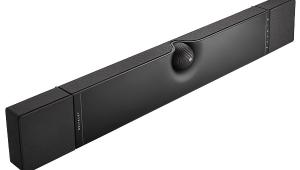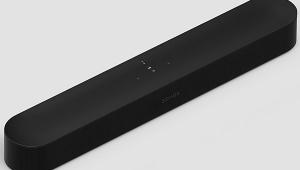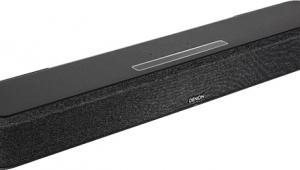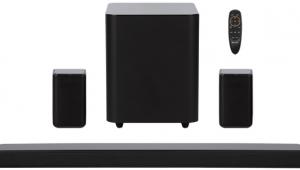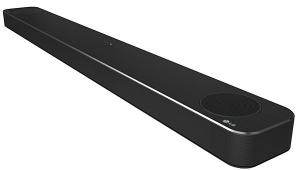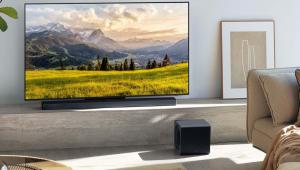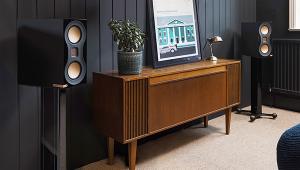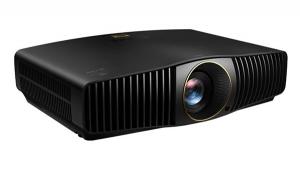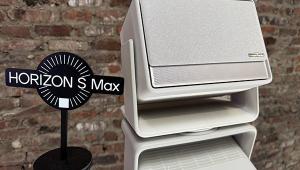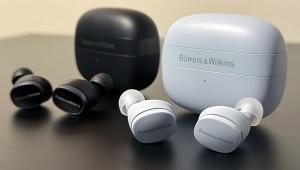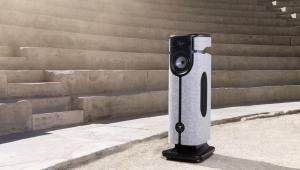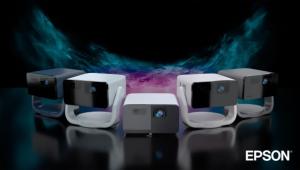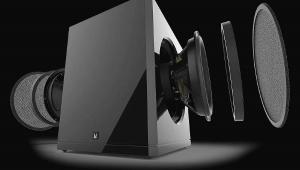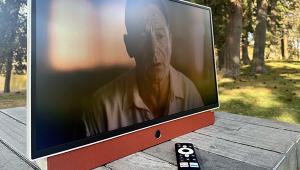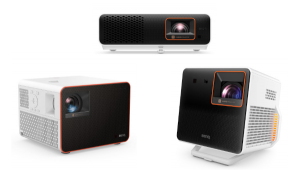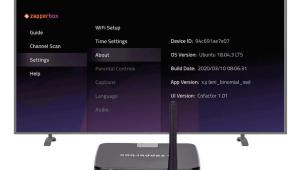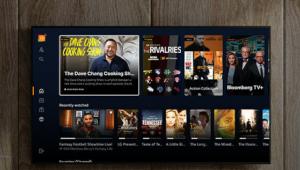Someone Sometimes with visits your blog regularly and recommended it in my experience to read as well. The way of writing is excellent and also the content is top-notch. Thanks for that insight you provide the readers! unabhängige Immobilienbewertung
The Samsung HW-QS700F Soundbar has Room-Filling Sound

AT A GLANCE
Plus
Excellent vocal clarity
Room-filling sound with Q-Symphony on Samsung TVs
Wireless connectivity
Minus
No on-screen or on-device settings display
Only confirms setting and input changes verbally
No direct voice assistant capability
THE VERDICT
If you are tired of not hearing TV dialog and are looking for a full, rich home theater experience, yet don’t want rear speakers, the Samsung HW-QS700F is an excellent choice to get an array of cinematic sound from above and in front of you.
While not as complete an experience as the flagship HW-Q990F soundbar and surround sound system, the HW-QS700F is a respectable upgrade to television speakers, giving a virtual surround experience, including upfiring speakers.
Like other Samsung soundbar models, the HW-QS700F is loaded with AI features to improve voice, gaming, adapting sound to content on-screen, and other automatic sound adjustments. These features take the HW-QS700F from being an ordinary soundbar to having rich, clear sound without the need to crank up the volume.
These enhancement features give Samsung soundbars an edge over its competition, like the Nakamichi DRAGON, which requires manual tweaking for its best performance, or the JBL Bar 1300X, or the Sonos Arc.
The HW-QS700F gets a bigger boost when paired with a Samsung TV equipped with Q-Symphony that employs the TV speakers to enrich the sound of the three forward-facing and two upfiring speakers in the soundbar.
Features
Many features of the HW-QS700F soundbar focus on using artificial intelligence to improve its sound. Formats like Dolby Atmos and DTS Virtual:X boost the soundbar’s audio capabilities even more:
Object-based 3D Audio - Dolby Atmos and DTS Virtual:X enabled for immersive surround sound that appears to place objects in different areas of the room. The Google and Samsung developed, Eclipsa Audio, creates even more immersion with separated and clear object sound throughout the room.
Q-Symphony - Uses AI-optimized audio to improve the surround sound by pairing a Q-Symphony enabled Samsung TV with the sound bar, automatically optimizing audio effects bouncing sound from both the TV’s speakers and those in the soundbar.
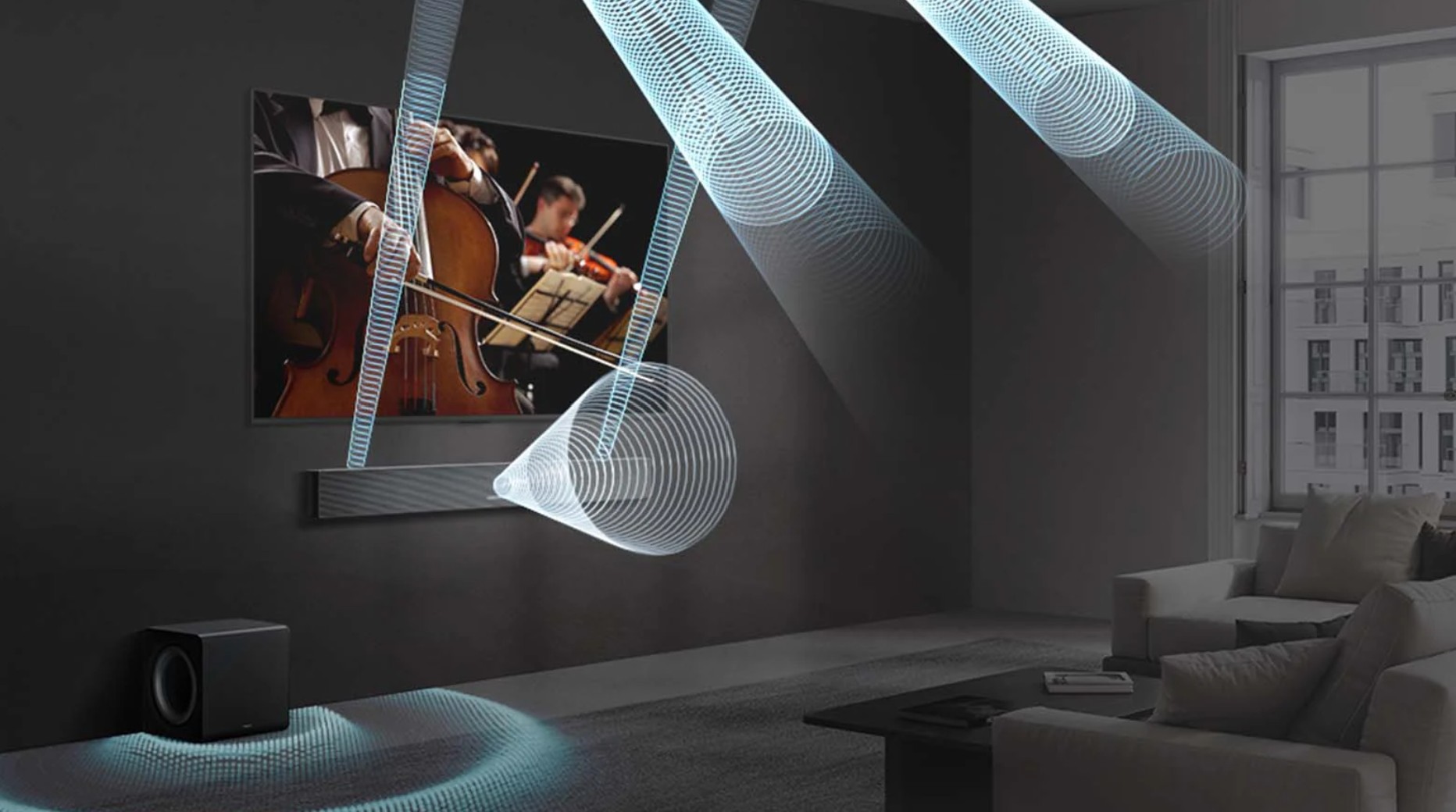
Adaptive Sound + - analyzes the video content and makes adjustments to sound levels based on what’s happening on-screen whether it’s whispering dialogue or a car chase scene.
Rotatable design - Using a gyro sensor, the HW-QS700F recognizes if it is placed horizontally on top of furniture or vertically on a wall beneath a wall-mounted TV. Speakers are designed to function as front and up-firing channels and adapt the speakers according to its position.
Moderate Bass- turns off the bass at night to prevent housemates or neighbors from being disturbed by the sound.
The soundbar accepts AirPlay, Chromecast, Spotify Connect, Tidal Connect, Bluetooth, and Tap Sound that allows you to tap a Samsung phone on the soundbar to instantly connect and play audio from just about any mobile device.
Setup
Because the HW-QS700F can connect to a TV with direct Wi-Fi or Bluetooth, setting up is almost instant. Download the smart things app, then scan the QR code on the soundbar to start setup. The app senses if you have it connected via HDMI eARC or Wireless. It automatically connects, and the soundbar speaks to you to confirm that the connection was successful.
Once connected, you can toggle on/off the features you want and adjust the treble, bass, and subwoofer in the SmartThings mobile app. This is the only way to see the chosen settings, as there is no screen or a TV display, even on Samsung TVs. If you prefer to use the soundbar’s remote control, the soundbar will speak your setting changes, “Adaptive Sound +, on,” and so forth.
Performance
The first thing immediately evident was that the dialog and vocals are noticeably clearer than any home theater I’ve used. It was a relief to finally hear what was being said without needing to turn on the closed captioning. Unlike other devices’ voice enhancement settings, the improved dialog wasn’t at the expense of background sound effects.
In fact, using Q-Symphony with a 2025 Samsung 8K QN900F, the sound was full and immersive as it bounced off the ceiling and walls from both the TV and the soundbar.
Without back speakers, it’s hard to get the sense of being surrounded by sound, but the HW-QS700F does give a sense of sound coming at me from above and the side. Watching Fantastic Beasts and Where to Find Them, magical creatures swooped down from the ceiling and snuck to the side of where I sat on the sofa. Note that back speakers can be wirelessly added to the 700F using the rear speaker kit, SWA-9500S, which is sold separately.
While connecting to a Samsung phone is as easy as tapping it against the soundbar, it’s easy to connect to an iPhone too. The soundbar is AirPlay enabled, and my iPhone listed it as a device to which I could send my audio. The connection was immediate and never dropped out.
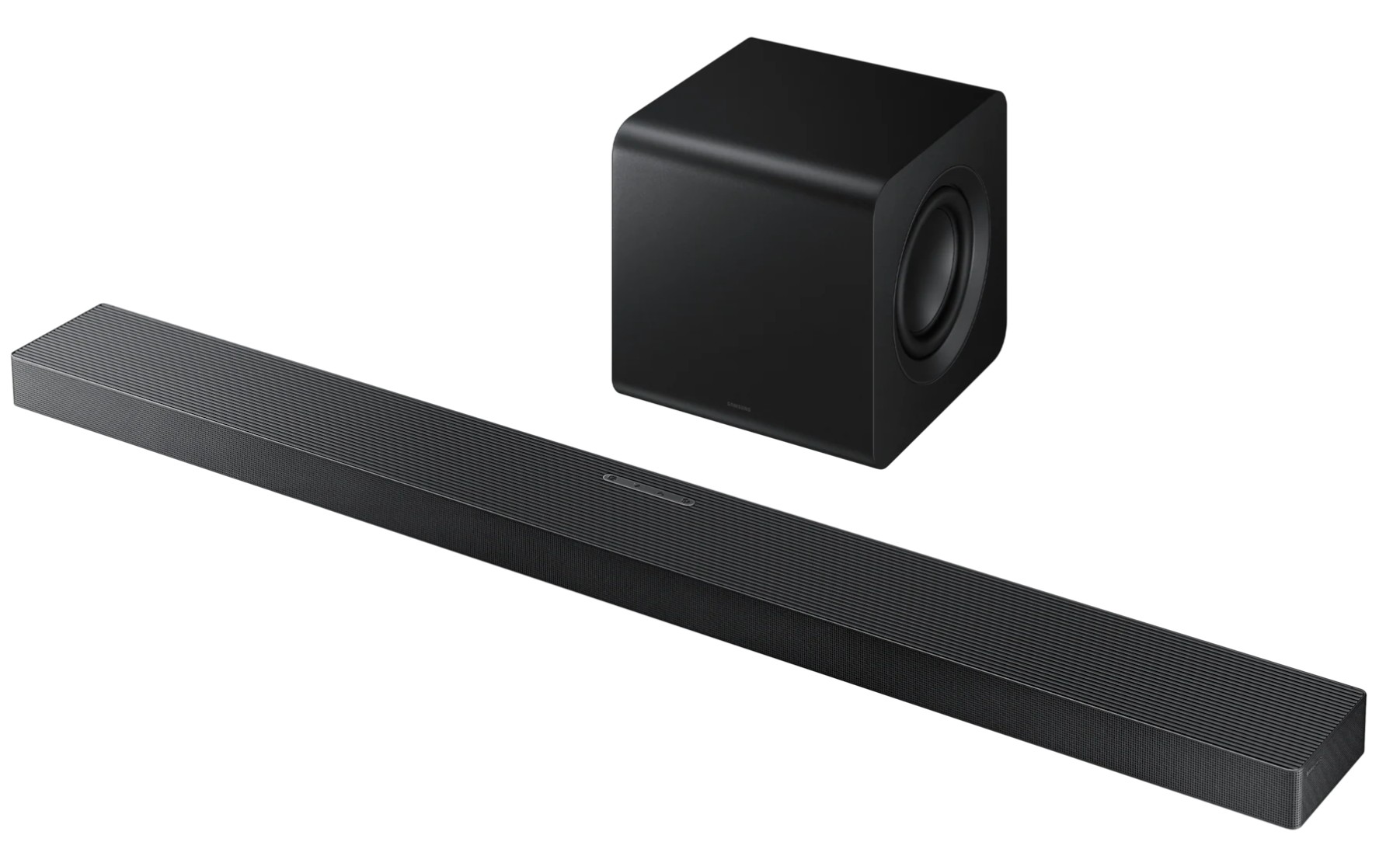
Initially, the treble was a bit muddy, and the highs were shrill. Once I chose DTS Virtual:X rather than Adaptive Sound, the instruments and vocals had better separation and clarity.
Although high-resolution music doesn’t play at its highest quality when connected wirelessly, I like to start with the best quality source and use my Apple high-res playlist.
While it’s a good home theater performer, this isn’t a system to sit down and listen to music; it’s better as background when visiting with a friend, doing chores, reading a book, etc. Nonetheless, the sound is good.
Vocals are clean and defined in classic rock songs like “Cowgirl in the Sand,” but the cymbals weren’t distinct. The bass reproduced the drum strikes. Overall, the music filled the room, and the midrange is solid.
In the intro of Joni Mitchell’s “California” the strings are crisp and clear. Mitchell’s vocals are like bells, and the background Appalachian dulcimer is distinct with well-reproduced tones. Likewise, the midrange on the Goo Goo Dolls “Iris” brought forward the mandolin and acoustic guitar with excellent bass, with no vibration or distortion.
Newer music and those songs remastered with spatial sound performed even better. Billie Eilish’s vocals bring out her emotion in “Wildflower” in Dolby Atmos Lossless. Sound fills the room with excellent separation in “Be There Still” by Davido in Spatial sound.
Despite the wireless connectivity from the iPhone, “Pink Pony Club” sounded better using AirPlay than it did when playing from Pandora on the Samsung TV. Evidence that the quality of the source music makes a difference.
Conclusion
Excellent dialog and vocals are enough reason to choose the Samsung HW-QS700F soundbar. While virtual rather than true surround, it still gives a home theater experience that is satisfactory for all but the biggest action movies. It would be nice to have a full parametric equalizer to adjust music to your liking, but it’s still a good value, especially for a second TV. Still, those who don’t want to tweak settings will be more than happy with the AI adjustments.
Specifications
Soundbar dimensions: width: 45.7"; height: 2"; depth is 4.72".
Subwoofer: width: 9.8"; height: 9.9"; depth 9.8"
Number of channels: 3.1.2
Soundbar operating Power consumption: 38W
Number of speakers: 8
Audio Formats: ATMOS Music, ATMOS, Dolby 5.1 Channel, Dolby Digital Plus, Dolby True HD
Surround Sound expansion, Game Pro, Standard, Adaptive Sound, DTS Virtual:X,
Night Mode and Moderate Bass
Decoding Formats: MP3, AAC, OGG, FLAC, WAV, ALAC, AIFF
Video: 4K Video Pass, HDR10+
Connectivity: 1 HDMI out, 1 HDMI in, eARC, HDMI CEC, Optical In, Bluetooth, Wi-Fi, Bluetooth 5.3.
Includes remote control and wall mount bracket.
- Log in or register to post comments


